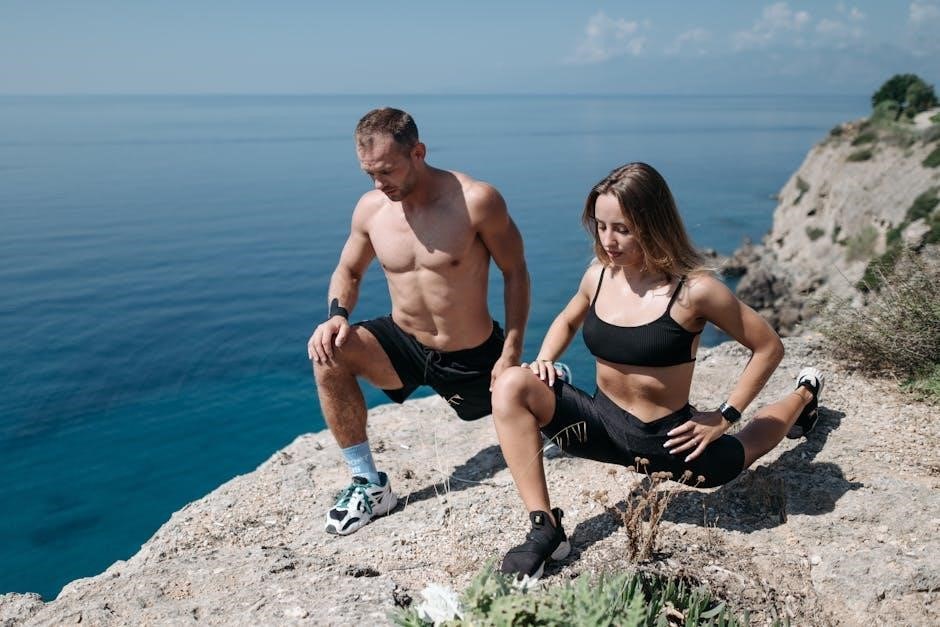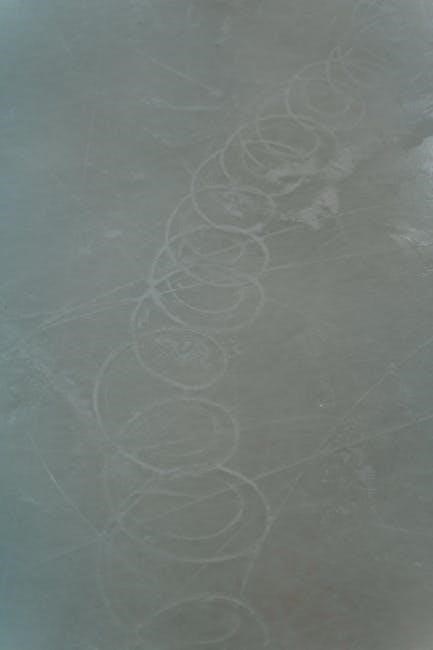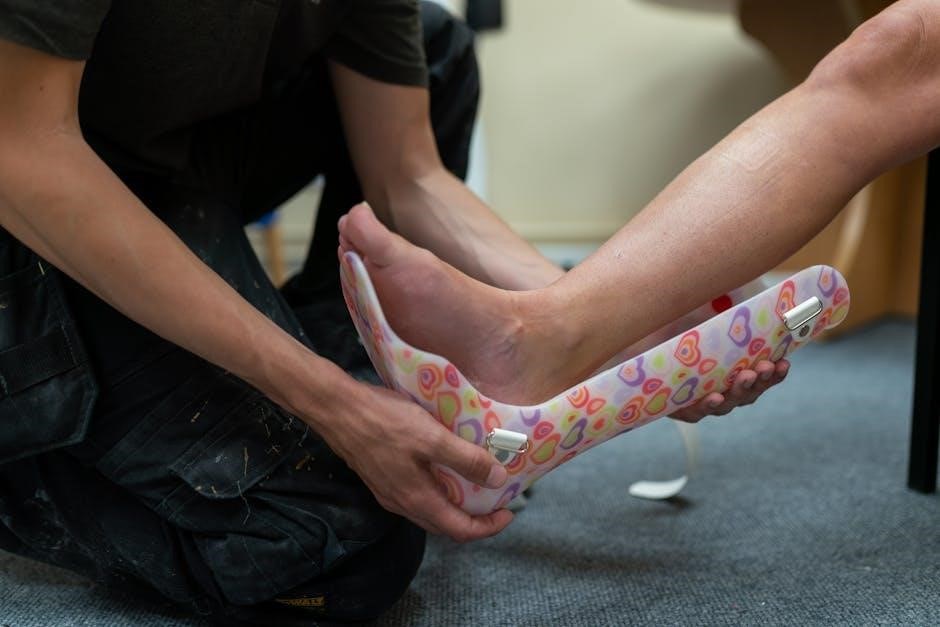Shin splint exercises are essential for rehabilitation and
prevention
of further injury, helping to strengthen muscles and improve overall fitness levels gradually always.
Understanding Shin Splints
Shin splints are a common injury that occurs due to repetitive stress on the muscles and tissues in the lower leg. The term refers to pain along the inner edge of the shinbone, typically developing after vigorous physical activity. Shin splints can be caused by a variety of factors, including overuse, poor footwear, and inadequate training. It is essential to understand the causes and symptoms of shin splints to develop effective treatment and prevention strategies. By recognizing the signs and symptoms, individuals can take steps to prevent further injury and promote healing. Understanding shin splints is crucial for developing a comprehensive rehabilitation plan, including exercises and stretches to alleviate pain and improve overall fitness. Regular exercise and proper training can help prevent shin splints.
Initial Exercises for Rehabilitation
Exercises for rehabilitation include stretching and strengthening to promote healing and reduce pain slowly over time always using proper techniques.
Medial Tibial Stress Syndrome Exercises
Medial tibial stress syndrome exercises are designed to alleviate pain and promote healing in the shin area. These exercises typically include stretching and strengthening routines, such as toe raises and calf stretches, to help reduce stress on the tibia; By incorporating these exercises into a rehabilitation program, individuals can help manage their condition and reduce the risk of further injury. It is essential to start with gentle exercises and gradually increase intensity and duration as the condition improves. A healthcare professional can provide personalized guidance on the most effective exercises for medial tibial stress syndrome, helping individuals achieve optimal recovery and return to their normal activities. Regular exercise can help prevent future occurrences.
Examples of Exercises for Shin Splints
Exercises include step ups and soleus squats to strengthen muscles and improve flexibility always gradually every day.
Exercises for Rehabilitation
Rehabilitation exercises are crucial for recovering from shin splints, and they include a variety of stretches and strengthening exercises. These exercises help to improve flexibility and reduce pain. A physical therapist or athletic trainer can provide guidance on the best exercises for rehabilitation. The goal of these exercises is to strengthen the muscles in the lower leg, including the calf and shin muscles. This can be achieved through a combination of exercises, such as toe raises and heel walks. By incorporating these exercises into a rehabilitation program, individuals can reduce their risk of further injury and improve their overall fitness level, allowing them to return to their normal activities. Regular exercise can also help to prevent future occurrences of shin splints.
Rehabilitation Exercises for Shin Pain
Exercises help alleviate shin pain and promote healing gradually always with proper technique and guidance from professionals.
Starting the Exercises
When starting exercises for shin splints, it is essential to begin slowly and gradually increase intensity and duration. This approach helps prevent further injury and allows the body to adapt to new demands. A healthcare professional or physical therapist can provide guidance on proper technique and help create a personalized exercise plan. It is crucial to listen to the body and stop or modify exercises if pain or discomfort occurs. By starting exercises slowly and being mindful of the body’s limitations, individuals can reduce the risk of exacerbating the condition and promote a safe and effective recovery. Regular exercise can help alleviate symptoms and improve overall fitness levels.

Step Ups Exercise
Step ups target specific muscles, helping to improve strength and reduce shin splint pain gradually with each repetition always using proper form techniques.
Technique and Progression
To perform the step ups exercise correctly, it is essential to focus on proper technique and progression. This involves starting with a low step and gradually increasing the height as strength and confidence improve. The exercise should be done slowly and controlled, with the involved leg leading the movement. It is also crucial to maintain proper posture and engage the core muscles to support the movement. As the individual becomes more comfortable with the exercise, the height of the step can be increased, and the number of repetitions can be gradually raised to continue challenging the muscles and promoting progression and improvement in shin splint rehabilitation.
Soleus Squats Exercise
Feet shoulder width apart, slide down wall slowly and carefully always.
Proper Form and Execution
To perform the soleus squats exercise correctly, stand with your feet shoulder-width apart and slowly slide down a wall, keeping your back straight and knees bent at a 90-degree angle. It is essential to maintain proper form and execution to avoid injury and get the most out of the exercise. Keep your weight evenly distributed on both feet and engage your core muscles to support your body. As you slide down the wall, focus on stretching your calf muscles and holding the position for a few seconds before returning to the starting position. Regular practice will help improve your overall fitness and reduce the risk of shin splints. Proper execution is crucial for effective rehabilitation.

Importance of Progressive Overload
Progressive overload helps increase strength and endurance gradually always using weights.
Increasing Strength and Endurance
To increase strength and endurance, it is essential to incorporate exercises that target the muscles in the lower leg, including the calf and shin muscles. By using a combination of strengthening exercises, such as toe raises and heel walks, individuals can improve their overall muscle function and reduce the risk of further injury. Additionally, incorporating progressive overload into a workout routine can help to further increase strength and endurance, allowing individuals to return to their normal activities without experiencing pain or discomfort. This can be achieved through the use of weights or resistance bands, and should be done gradually to avoid causing further injury.

Precautions and Modifications
Exercises should be modified based on individual needs and abilities always slowly.
Easing Off Exercises
When experiencing pain, it is essential to ease off exercises to avoid further injury, allowing the affected area to rest and recover.
This can be achieved by reducing the intensity and frequency of exercises, and incorporating low-impact activities such as stretching and foam rolling.
It is crucial to listen to your body and not push through pain, as this can lead to prolonged recovery time and potentially cause more severe damage.
By easing off exercises and allowing your body to recover, you can help prevent further injury and promote a safe and effective rehabilitation process, ultimately leading to a successful recovery.

and Summary
Effective rehabilitation requires consistent exercise and patience always helping muscles.
Key Takeaways
Shin splint exercises are crucial for effective rehabilitation, and it is essential to remember that patience and consistency are key to a successful recovery process always.
The exercises should be started slowly and progressed gradually to avoid exacerbating the injury, and it is crucial to listen to your body and stop if you experience any pain or discomfort during the exercises.
A well-structured rehabilitation program can help alleviate shin splint symptoms and prevent future occurrences, and it is vital to work with a healthcare professional to develop a personalized exercise plan that meets your specific needs and goals.
By following a comprehensive rehabilitation program and incorporating shin splint exercises into your daily routine, you can reduce your risk of injury and improve your overall fitness levels over time.